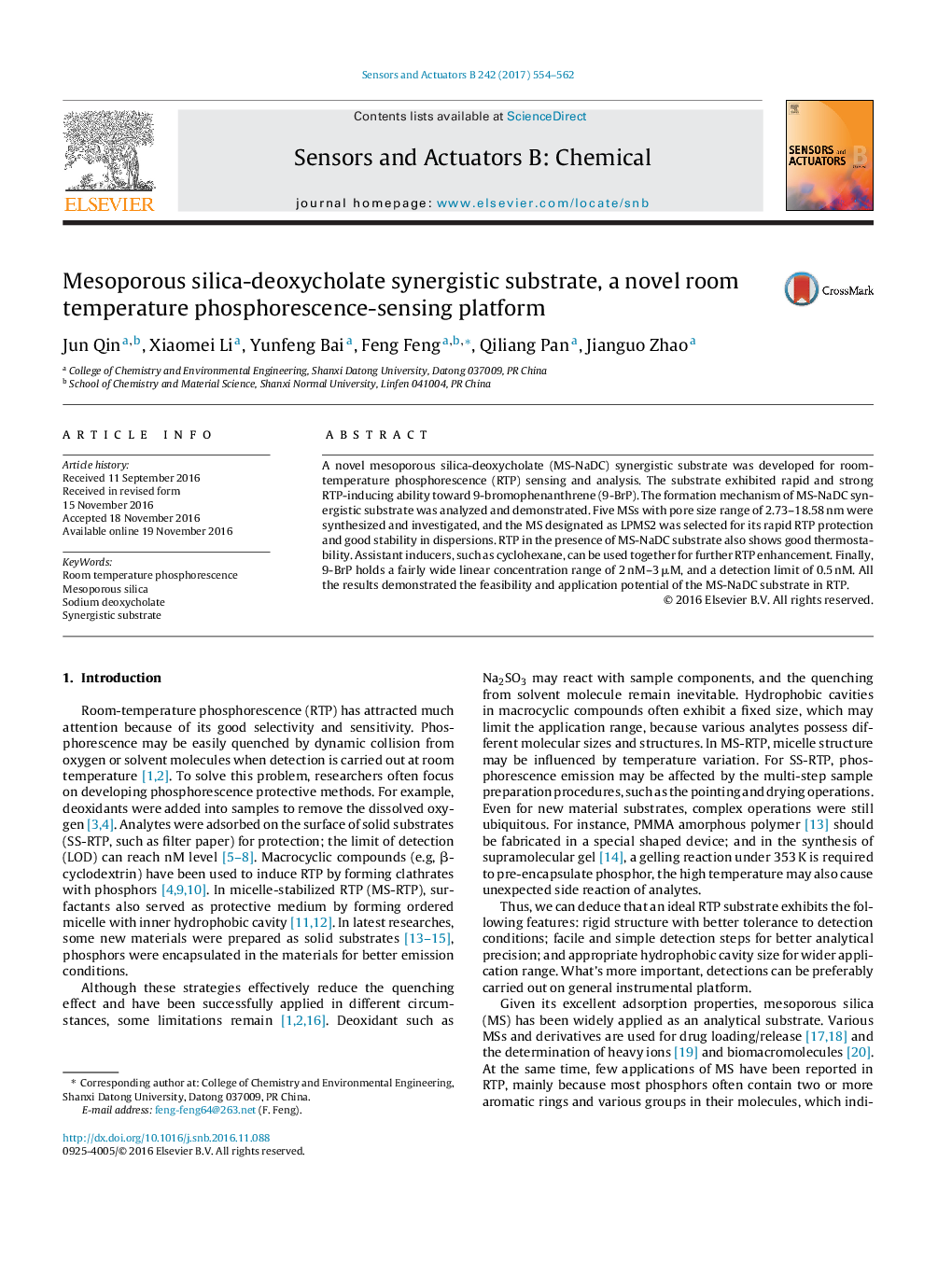| Article ID | Journal | Published Year | Pages | File Type |
|---|---|---|---|---|
| 5009716 | Sensors and Actuators B: Chemical | 2017 | 9 Pages |
â¢The MS-NaDC substrate showed strong RTP-inducing ability and good thermostability.â¢The RTP-inducing ability is based on the hydrogen bonding between NaDC and MS.â¢The LPMS2 (pore size: 3.83 nm) which is stable in dispersions induced RTP rapidly.â¢The substrate enabled wide linear concentration range and high sensitivity.
A novel mesoporous silica-deoxycholate (MS-NaDC) synergistic substrate was developed for room-temperature phosphorescence (RTP) sensing and analysis. The substrate exhibited rapid and strong RTP-inducing ability toward 9-bromophenanthrene (9-BrP). The formation mechanism of MS-NaDC synergistic substrate was analyzed and demonstrated. Five MSs with pore size range of 2.73-18.58 nm were synthesized and investigated, and the MS designated as LPMS2 was selected for its rapid RTP protection and good stability in dispersions. RTP in the presence of MS-NaDC substrate also shows good thermostability. Assistant inducers, such as cyclohexane, can be used together for further RTP enhancement. Finally, 9-BrP holds a fairly wide linear concentration range of 2 nM-3 μM, and a detection limit of 0.5 nM. All the results demonstrated the feasibility and application potential of the MS-NaDC substrate in RTP.
Graphical abstractDownload high-res image (175KB)Download full-size image
